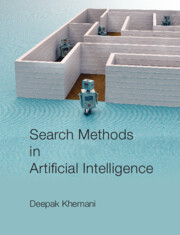Refine search
Actions for selected content:
3312 results in Artificial Intelligence and Natural Language Processing
1 - Introduction
-
- Book:
- Artificial Intelligence
- Published online:
- 23 May 2024
- Print publication:
- 30 May 2024, pp 1-21
-
- Chapter
- Export citation
Bibliography
-
- Book:
- Artificial Intelligence
- Published online:
- 23 May 2024
- Print publication:
- 30 May 2024, pp 315-353
-
- Chapter
- Export citation
5 - Artificial Intelligence, Growth, and Inequality
-
- Book:
- Artificial Intelligence
- Published online:
- 23 May 2024
- Print publication:
- 30 May 2024, pp 107-172
-
- Chapter
- Export citation
10 - The Future of Artificial Intelligence and Implications for Economics
-
- Book:
- Artificial Intelligence
- Published online:
- 23 May 2024
- Print publication:
- 30 May 2024, pp 269-314
-
- Chapter
- Export citation
Tables
-
- Book:
- Artificial Intelligence
- Published online:
- 23 May 2024
- Print publication:
- 30 May 2024, pp xii-xii
-
- Chapter
- Export citation
Preface
-
- Book:
- Artificial Intelligence
- Published online:
- 23 May 2024
- Print publication:
- 30 May 2024, pp xv-xvi
-
- Chapter
- Export citation
Figures
-
- Book:
- Artificial Intelligence
- Published online:
- 23 May 2024
- Print publication:
- 30 May 2024, pp xi-xi
-
- Chapter
- Export citation
Index
-
- Book:
- Artificial Intelligence
- Published online:
- 23 May 2024
- Print publication:
- 30 May 2024, pp 354-360
-
- Chapter
- Export citation

Artificial Intelligence
- Economic Perspectives and Models
-
- Published online:
- 23 May 2024
- Print publication:
- 30 May 2024
Start-up activity in the LLM ecosystem
-
- Journal:
- Natural Language Engineering / Volume 30 / Issue 3 / May 2024
- Published online by Cambridge University Press:
- 14 May 2024, pp. 650-659
-
- Article
-
- You have access
- Open access
- HTML
- Export citation

Search Methods in Artificial Intelligence
-
- Published online:
- 30 April 2024
- Print publication:
- 24 October 2024
Editorial Note
-
- Journal:
- Natural Language Engineering / Volume 30 / Issue 2 / March 2024
- Published online by Cambridge University Press:
- 01 April 2024, pp. 215-216
-
- Article
-
- You have access
- Open access
- HTML
- Export citation
13 - Unjust Enrichment Law and AI
- from Part I - Law of Obligations
-
-
- Book:
- The Cambridge Handbook of Private Law and Artificial Intelligence
- Published online:
- 21 March 2024
- Print publication:
- 28 March 2024, pp 287-304
-
- Chapter
- Export citation
19 - Financial Supervision and AI
- from Part III - Corporate and Commercial Law
-
-
- Book:
- The Cambridge Handbook of Private Law and Artificial Intelligence
- Published online:
- 21 March 2024
- Print publication:
- 28 March 2024, pp 431-451
-
- Chapter
- Export citation
Introduction
-
-
- Book:
- The Cambridge Handbook of Private Law and Artificial Intelligence
- Published online:
- 21 March 2024
- Print publication:
- 28 March 2024, pp 1-17
-
- Chapter
- Export citation
Contributors
-
- Book:
- The Cambridge Handbook of Private Law and Artificial Intelligence
- Published online:
- 21 March 2024
- Print publication:
- 28 March 2024, pp xvii-xx
-
- Chapter
- Export citation
Part IV - Comparative Perspectives
-
- Book:
- The Cambridge Handbook of Private Law and Artificial Intelligence
- Published online:
- 21 March 2024
- Print publication:
- 28 March 2024, pp 597-656
-
- Chapter
- Export citation
Index
-
- Book:
- The Cambridge Handbook of Private Law and Artificial Intelligence
- Published online:
- 21 March 2024
- Print publication:
- 28 March 2024, pp 657-672
-
- Chapter
- Export citation
4 - Self-Driving Contracts and AI
- from Part I - Law of Obligations
-
-
- Book:
- The Cambridge Handbook of Private Law and Artificial Intelligence
- Published online:
- 21 March 2024
- Print publication:
- 28 March 2024, pp 93-112
-
- Chapter
- Export citation
2 - Computable Law and AI
-
-
- Book:
- The Cambridge Handbook of Private Law and Artificial Intelligence
- Published online:
- 21 March 2024
- Print publication:
- 28 March 2024, pp 36-68
-
- Chapter
- Export citation
